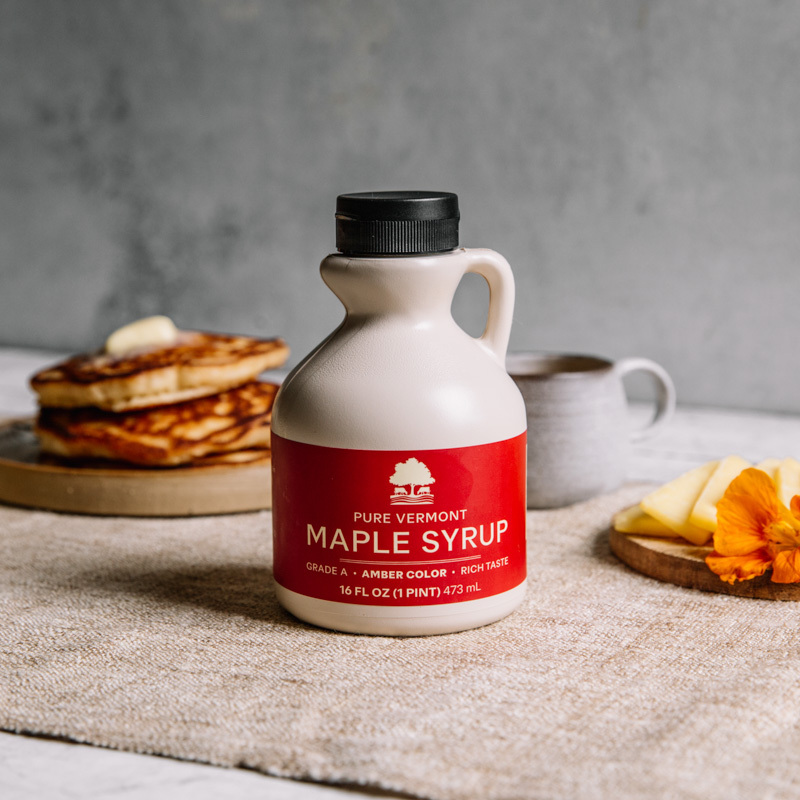JAKARTA, blessedbeyondwords.com – Maple Syrup: Sweetener from the Forest is honestly one of my favorite discoveries since I start paying attention to what I eat. The first time I tried maple syrup (yep, not the fake pancake stuff, but the real deal from the forest), I was blown away. It’s wild how one little drizzle can turn basic Food into something so fresh and fancy.
Maple syrup is a delightful natural sweetener that has been cherished for centuries. Harvested from the sap of sugar maple trees, this golden elixir is not only a staple in many kitchens but also a versatile ingredient that enhances a wide variety of dishes. With its unique flavor profile and rich history, maple syrup is a sweetener that brings a touch of nature’s goodness to your table. In this guide, we’ll explore the origins of maple syrup, its culinary uses, health benefits, and tips for selecting the best syrup.
The Allure of Maple Syrup

Maple syrup is more than just a sweetener; it’s a taste of the forest. Its distinct flavor ranges from light and delicate to dark and robust, depending on the season and processing method. The process of tapping maple trees and collecting sap is a time-honored tradition, especially in regions like Canada and the northeastern United States. This natural sweetness not only elevates breakfast favorites like pancakes and waffles but also adds depth to savory dishes, desserts, and even cocktails.
The Process of Making Maple Syrup
The journey from sap to syrup involves several steps:
- Tapping the Trees: In late winter to early spring, sugar maple trees are tapped by drilling a small hole into the trunk and inserting a spout. This allows the sap to flow out.
- Collecting the Sap: The sap, which is mostly water with a small percentage of sugar, is collected in buckets or through tubing systems.
- Boiling the Sap: The collected sap is then boiled down to evaporate the water, concentrating the sugars. This process can take up to 40 gallons of sap to produce just one gallon of maple syrup.
- Filtering and Bottling: Once the syrup reaches the desired consistency and flavor, it is filtered to remove impurities and then bottled for sale.
Types of Maple Syrup
Maple syrup is categorized based on its color and flavor, which are determined by the time of harvest:
- Golden Color, Delicate Taste: Harvested early in the season, this syrup has a light flavor that is perfect for drizzling over pancakes or yogurt.
- Amber Color, Rich Taste: This syrup is harvested mid-season and has a more pronounced maple flavor, making it ideal for baking and cooking.
- Dark Color, Robust Taste: Collected later in the season, this syrup has a strong flavor that works well in marinades, glazes, and desserts.
Culinary Uses of Maple Syrup
Maple syrup is incredibly versatile and can be used in various ways:
- Breakfast Dishes: The most common use, drizzled over pancakes, waffles, and French toast.
- Baking: Substitute maple syrup for sugar in recipes for cookies, cakes, and muffins to add moisture and flavor.
- Savory Dishes: Use maple syrup in glazes for meats, as a sweetener in salad dressings, or in marinades for vegetables.
- Beverages: Add maple syrup to coffee, tea, or cocktails for a unique twist on traditional drinks.
Health Benefits of Maple Syrup
While maple syrup is still a form of sugar, it does offer some health benefits compared to refined sugars:
- Rich in Antioxidants: Maple syrup contains various antioxidants that can help combat oxidative stress in the body.
- Mineral Content: It provides essential minerals such as manganese, zinc, and calcium, which are beneficial for overall health.
- Lower Glycemic Index: Compared to refined sugars, maple syrup has a lower glycemic index, meaning it may cause a slower rise in blood sugar levels.
Tips for Selecting and Storing Maple Syrup
- Look for Pure Maple Syrup: Ensure you choose 100% pure maple syrup without additives or artificial flavors. Check the label for quality assurance.
- Choose the Right Grade: Select the grade that best suits your culinary needs based on flavor and color.
- Storage: Store unopened maple syrup in a cool, dark place. Once opened, keep it in the refrigerator to maintain freshness.
Conclusion
Maple syrup is a sweetener from the forest that offers an unexpected flavor from nature’s pantry. Its versatility in the kitchen, combined with its unique taste and health benefits, makes it a delightful addition to any meal. Whether you’re drizzling it over breakfast, using it in baking, or incorporating it into savory dishes, maple syrup is sure to elevate your culinary creations. Embrace the sweetness of nature and enjoy the rich flavors that this beloved syrup brings to your table!
Sharpen Your Skills: Delve into Our Expertise on Food
Check Out Our Latest Piece on Potato Salad: Classic Comfort, Perfect Side!




